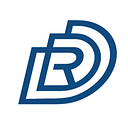DREP: Paving a Way for the Future Networked NFT Economy
NFT has been a long hyped notion since 2017 and kept burgeoning with a total volume hitting over $18 billion, and a few iconic collections have attracted a large chunk of traffic on web 3.0, such as BAYC, NBA Top Shot, etc. However, along with these glorious signs of progress in the NFT market come also dilemmas: (1) standalone NFT ecosystems leading to poor liquidity, and (2) lack of sustainability in the usage of NFTs. In fact, beyond investments and collectibles, NFT’s staying power in representations of original ownership, DAO management, and more will potentially drive the future of Metaverse economy.
Awaiting an Efficient NFT Ecosystem
The most beautiful part of web 3.0 is that users claim ownership of their digital assets, just like clothes, properties, and accessories we possess in the physical world. And NFTs, due to their uniqueness and irreplaceability, can be a cool part of user identity in web 3.0. Buyers may want to own or collect an NFT out of pure affection. You may never know how or why an NFT becomes the next hot cake. Meanwhile, NFTs are widely acknowledged as something more than just digital assets due to their financial attributes. Almost every NFT holder, whether declaring full or fractional ownership, tends to seek ways to grow the value of their NFTs.
However, there’s still poor liquidity in NFT markets caused by barriers among different chains. In most cases, NFT cannot unleash its full values due to the lack of liquidity, and that can be explained from the following two aspects: (1) Low efficiency in cryptocurrency exchanges. NFT’s value is priced by certain cryptocurrencies. If smooth standardized token exchanges cannot be realized, then not to mention an uninterrupted NFT swap. (2) Limited trading volume hinders NFTs from gaining more value, the root cause of which lies in non-communicating NFT marketplaces built on different chains. An interconnected NFT ecosystem is in demand to grow the wide adoption of NFTs.
A Sustainable Business Model
It is now frequently reported that industry pilots are on the wings of NFTs as if FOMO starts prevailing in traditional markets, which could be a practice of long-term web 3.0 commercialization rudiment. For example, BAYC was introduced to one leading sports brand in China, and Starbucks launched its own NFTs this year. Indeed, a new marketing movement taking advantage of NFT is right here under the nose, which is more cost-efficient than grabbing advertisement places. Marked by NFTs, traditional industries can promote brand publicity and hold their customers by offering sui generis experiences and benefits.
Besides, traditional industries may kick off their web 3.0 journeys by shaping their DAOs. Unlike single creators, enterprises have a natural advantage that they would carry certain publicity stepping into web 3.0, which to some extent relieves them from striving for primary traffic. The combination of brand culture and NFT bestows traditional industries greater magnetism to gather more web 3.0 users or supporters to be more specific, which could later form into a DAO, and the initial members will in turn help further grow the value of their brands and products. DAO members may contribute to creating brand-related UGC (or even new NFTs) and receive incentives from the brand. All of the above is foreseeable in a fully equipped web 3.0 commercial model, with adequate NFT and DAO infrastructure in place.
DREP Tools Right Out of the Box
- An Upcoming NFT Aggregator
DREP expects to gather NFT marketplaces from multiple chains. The NFT aggregator unlocks higher liquidity and interoperability by supporting multi-chain assets, enabling cross-chain NFT trading and a bundle of other cross-chain financial operations. Our users will get to access diverse yield channels easily, explore the best possible opportunities, and execute smooth swaps to maximize their capital efficiency.
- DREP Reputation Protocol
A DAO can work like this: An original team spreads a vision that attracts like-minded users to join in, and contribute UGCs to further spread or upgrade the visions of the project. Rewards from the outside might come along in terms of funding, NFT investment, higher publicity, or anything that makes the DAO project more valuable. In return, DAO contributors will get rewards either in terms of PoW (Proof-of-Work), tokens, staking, voting rights, or others that are useful in co-deciding the next step of project growth. Whether a DAO performs sound or not depends not only on the voting and governance mechanism but also on user credit and DAO reputation. Based on recorded on-chain data stored in users’ DIDs, DREP Credit 2.0 is upgrading the on-chain KYC module to better verify user profiles, laying a reliable foundation for a credible network among all user interactions.
DREP aims to be a strong set of web 3.0 infrastructure: to boost token liquidity locked out of a single chain, realize seamless cross-chain interactions, and secure healthy DAO governance while offering tangible pathways in exploring the NFT world.
For more information,
Telegram group: https://t.me/drep_foundation
DREP Twitter: https://twitter.com/DrepOfficial
DREP Official Website: https://www.drep.org/
DREP Credit: https://credit.drep.org/
